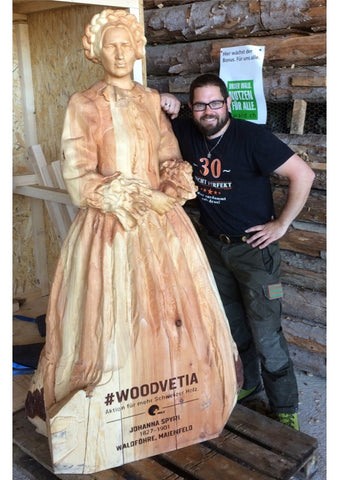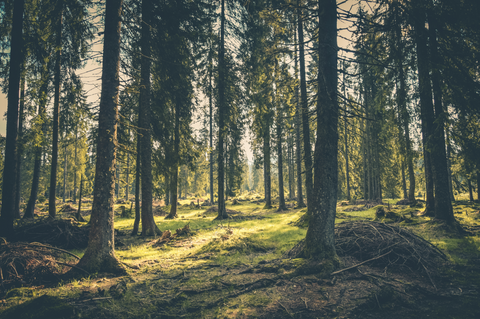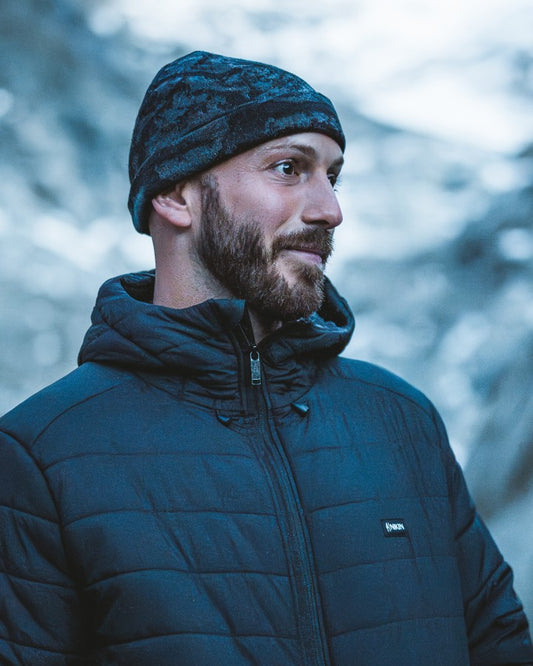We now know that forests are essential for our planet and the life on it. The continued existence and protection of forests is therefore a major concern. How do forests and people work side by side? To find out, we asked a person who probably knows the forest best: the forester. We are delighted that we were able to put these and other questions to the Swiss forester Peter Piller.
How did you become a forester?
Peter: Even as a young boy, I worked in the forest with my father. I've always been fascinated by the forest, be it in my hobbies or when working with a chainsaw. After a trial apprenticeship, it was immediately clear to me which path I would take.
What do you like best about your job?
Peter: Clearly the work in nature and the variety that this profession brings. Long-term and sustainable thinking, which is probably more in demand in the forest than in any other profession.
What are the tasks of a forester?
Peter: The job is very varied and the forester is a generalist. It depends very much on the region you work in and how the operation is organized. My main tasks in Rüschegg are advising forest owners, marking the trees to be felled, planning felling and planting, maintaining the infrastructure (forest roads, etc.), selling timber and managing the forestry operation with eight employees.
What difficulties do you experience in your job?
Peter: Reconciling the various demands on the forest and finding the best solution. The public and authorities often lack an understanding of forest management.
Forestry staff plan at least two generations in advance. In order to have a sustainable forest that fulfills its functions, we must and may cut down trees. With the wood from these trees, we harvest the only renewable raw material in Switzerland. With the sustainable forestry that we practice in Switzerland, we are doing something very positive for the forest and producing aCO2-neutral building material. The price of logs in Switzerland is very low, yet two-thirds of the wood we need is imported from abroad. It is very difficult to run the forestry business profitably.
[ product-handles list="treesocks-short-single, treeshopper-forest, treehoodie-basic-women, treecap-snap-classic, treebottle-glass-nikin-swim"]
To what extent do foresters do something good for the environment by felling trees?
Peter: The felled trees provide us with the renewable andCO2-neutral raw material wood. It makes sense to harvest wood sustainably in our forests to prevent wood being transported halfway around the world or virgin forests and tropical forests being cleared. By cutting down trees, we create space for young people and bring light to the ground. We try to promote the mix by helping rare Tree and shrub species. By harvesting trees, we strengthen stand stability and promote biodiversity.
What challenges does the Swiss forest face?
Peter: The pressure from the public on the forest, its inhabitants and the forest owners is constantly increasing. It is impossible to meet all the demands of bikers, horse riders, dog walkers, hikers, etc. A big challenge is to inform the population that every forest has an owner and that we are doing something very important and good for the forest's functions by managing it.
Are you feeling the effects of climate change on the forest?
Peter: We are noticing that the tree line is shifting upwards. The tree species are shifting. Certain tree species, such as spruce, are struggling with the drought. They are susceptible to the bark beetle or other pests.
What are the most common tree pests in Swiss forests and what about invasive species?
Peter: In my area, the spruce bark beetle is the worst pest. With timber or Christmas trees imported into Switzerland, we are also seeing an increase in invasive pests that we didn't know we had here.
What measures does a forester take against tree pests? Can an infested Tree be saved?
Peter: You can no longer save a bark beetle-infested Tree . However, you can combat the spread of the beetle by immediately felling the infested Tree and transporting it out of the forest. If this is not possible, you can also remove the bark from the Tree so that the larvae dry out.
What would you like to pass on to people who don't understand much about your profession?
Peter: I recommend informing yourself before letting out hurtful criticism about forest management. Forestry staff think in very long cycles. The forest often doesn't look good to the average person after an intervention. The positive effects only become apparent after a few years.

Peter Piller is 36 years old and comes from Plaffeien (FR). He works in the Rüschegg-Nord forest district (BE), where he manages a forestry operation with eight employees. One of the best moments of Peter's job is the two close encounters with the lynx. "A beautiful animal," he adds.
We at NIKIN would like to thank Peter Piller once again for his openness.
The profession of forester is essential for the functioning of the forest ecosystem, whereby the goal of the diverse tasks is always sustainability. Be this in the use of native wood or in the establishment of a permanent forest. We would therefore like to see more appreciation and gratitude shown to the forester profession. After all, we all benefit from our native forest.





















